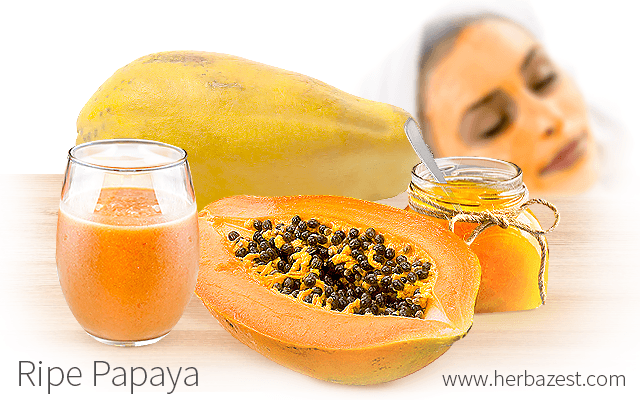There's nothing like biting into the mouthwatering flesh of a fresh, ripe papaya fruit. However, there's more to it than just its culinary value. Used in countless preparations for food, cosmetics, and natural healthcare, ripe papaya benefits are endless.
When Is a Papaya Ripe?
How to pick a papaya and being able to tell when it is ripe is one of the most common challenges consumers face in grocery stores and fresh food markets. The somewhat exclusive fruit is less familiar for those living outside of the tropical areas where papaya trees are grown.
As a papaya fruit matures, its skin changes from dark green to light green, and eventually to golden yellow. While normal ripeness indicators vary according to plant type, most commercially-grown papayas are harvested once they have turned about a quarter yellow and are then allowed to finish the ripening process while in transit. For local markets, fruits are left on the tree even longer as this further enhances their overall flavor.
When a papaya is ripe, it has a little give when pressed and a pleasing, fruity aroma. Meanwhile, an unripe, green papaya will be extremely hard and durable, emitting virtually no smell at all.
Ripe Papaya Benefits
Ripe papayas contain powerful antioxidants that support the immune system by protecting the body's cells from free radical damage. Plus, the fact that the ripe papaya can be safely enjoyed in its raw form is a decided advantage over its unripe, green counterpart, whose uncooked latex is poisonous to humans.
Although different cultivars may contain varying amounts of phytonutrients, maturity level directly influences papaya nutrition. For instance, abundant antioxidant-rich plant pigments called carotenoids are responsible for the ripe papaya's bright color and much of its medicinal action.
A 100-G SERVING OF A RIPE PAPAYA PROVIDES NEARLY 70% OF THE DAILY RECOMMENDED INTAKE OF VITAMIN C AND UP TO 10% OF VITAMIN A.
Papaya vitamins include vitamins A, B, and C. Interestingly, some studies indicate that carbohydrates (including fiber), fats, and protein are significantly decreased in mature papayas.
What to Do with a Ripe Papaya
When papayas are ripe, they are most commonly peeled, deseeded, and eaten just like a fresh, raw melon. Occasionally served with lemon or limes, they make excellent nutritive snacks and are best served chilled.
The ripe papaya fruit can be processed in a food blender and served as baby food for a contemporary rendition of old-fashioned apple sauce. Papaya food products include puree and nectar, which can be transformed into smoothies, papaya teas, ice creams, juices, jams, and marmalade. Some people use ripe papayas to add texture and brightness to fresh veggie and tropical fruit salads, while others prefer candied papaya.
While consumers looking to take advantage of its antioxidant and wound-healing effects slather ripe papaya over affected skin areas, the tropical fruit is a popular ingredient in commercial skin-care products, such as face masks, body scrubs, and creams. It is because the fruit has shown efficacy for the removal of dead skin cells and the improvement of acne.
With their succulent flavor and a long list of scientifically-backed health benefits, ripe papayas continue to prove themselves worthy of admiration.
Sources
- IOSR Journal of Pharmacy and Biological Sciences, Evaluation of nutritional components of Carica papaya L. at different stages of ripening, 2013
- National Library of Medicine, Vitamin C
- National Nutrient Databank Conference, Vitamin and mineral content of tropical fruit cultivars grown in Hawaii
- University of California, Fruit English, Papaya, Recommendations for maintaining postharvest quality
- USDA Nutrient Database, Papayas, raw




